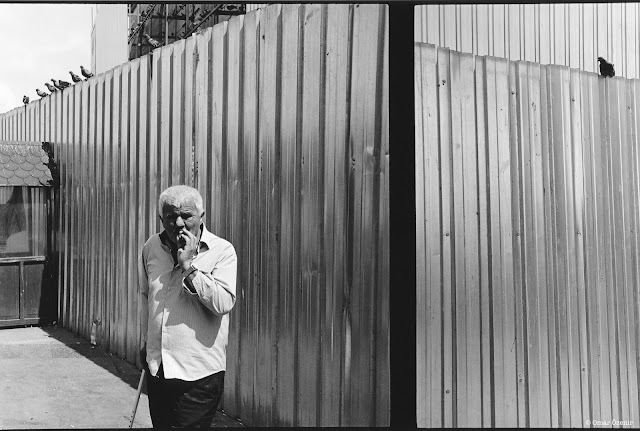These are two views from Hagia Sophia, when it was still a museum. One is an interior made from the upper gallery, the other is an outward view from a window on the upper gallery, towards the Blue Mosque - another icon - in the distance. I love harsh mid-day sun for this kind of architecture. I think it defines the form of a curved dome very nicely.
The negs for these photos are from 2007 but the prints are from a few weeks ago. I was going through my negative archive, inspecting them with a loupe (a reversed 50mm lens actually...it does the job), and was struck by the beauty of these two adjacent MF frames.
Yes, just like a print, negs can be beautiful in their own right. Then I saw that these were Delta400 developed in Perceptol (1+1), a developer I haven't used for ages. Naturally I was curious how they would print. And boy, do they print nicely! The only extra exposure I gave was a bit at the top on both prints; nothing major. The scanner couldn't preserve it, and I'm not too finicky about it either, but there is the tiniest detail in the whites of the upper windows in the interior view.
I also have to add that the optic these negs were made with is amongst the very best I've ever used: a Bronica 65mm f/4 on a Bronica RF645. It's a shame that despite some very nice haptics, the camera is a bit temperamental and not the pinnacle of reliability, but its lenses are absolutely phenomenal. This statement is no hyperbole at all.
The prints are on 24x30cm Ilford Classic paper.
I haven't been to Hagia Sophia since I made these pictures. That's 16 years now. Wow, time does fly. But Istanbul has been so overrun with tourists over the last decade, that every time I passed the church/museum/mosque I saw the endless queues and couldn't muster the determination for another visit.
So, that was it today. Hope it was worth your time. That's the big question, isn't it? Will it be worth my time? Everybody wants our time these days. At least this place is ad free. And by the way, don't bother checking the prices for the Bronica RF645 now! They've become pretty steep. Also, given their track record for reliability, buying one without extensively using and checking it would be a huge risk.Cheers...and cherish the light!








